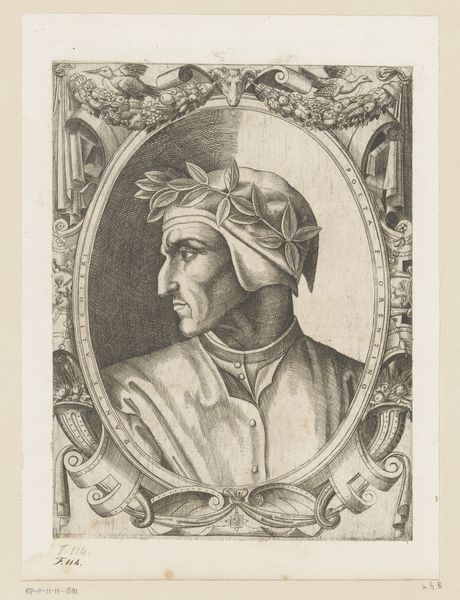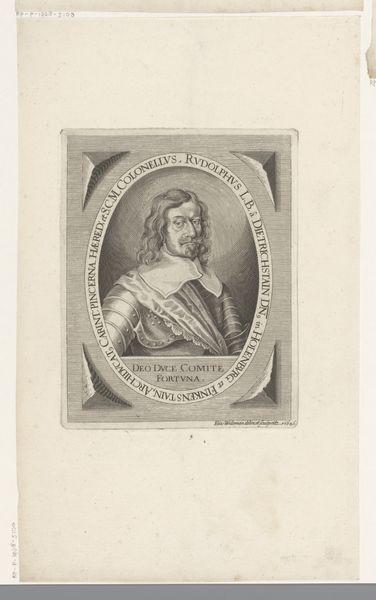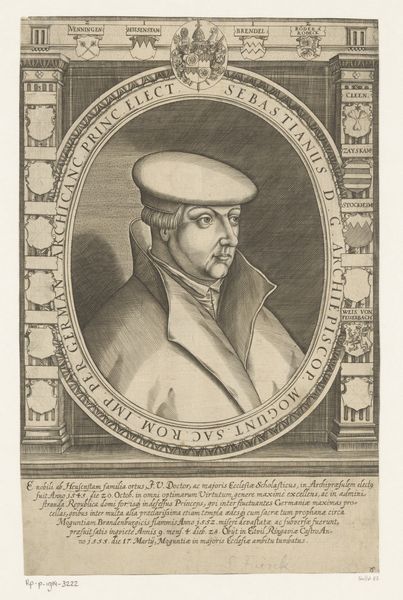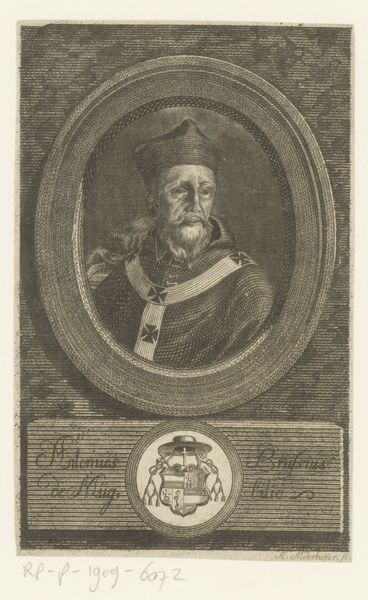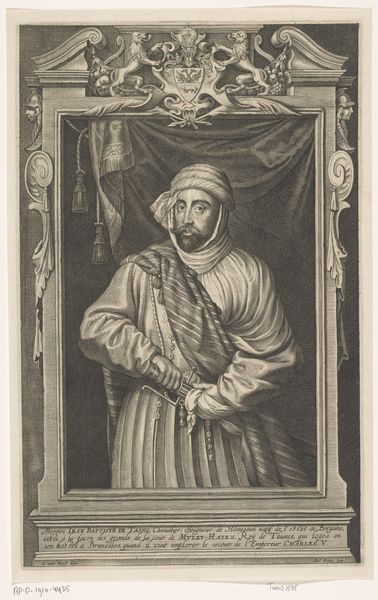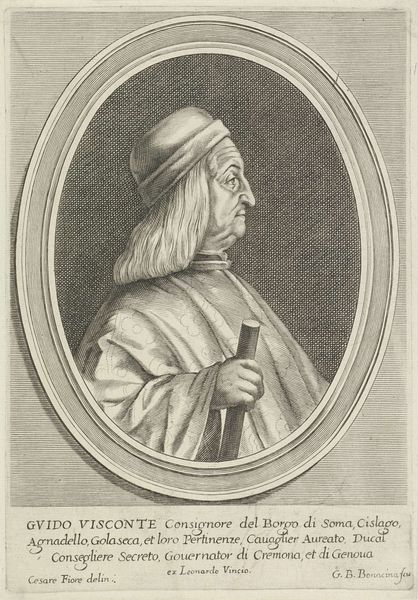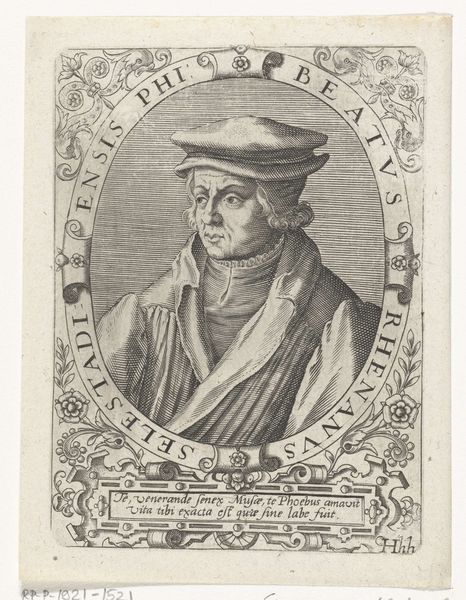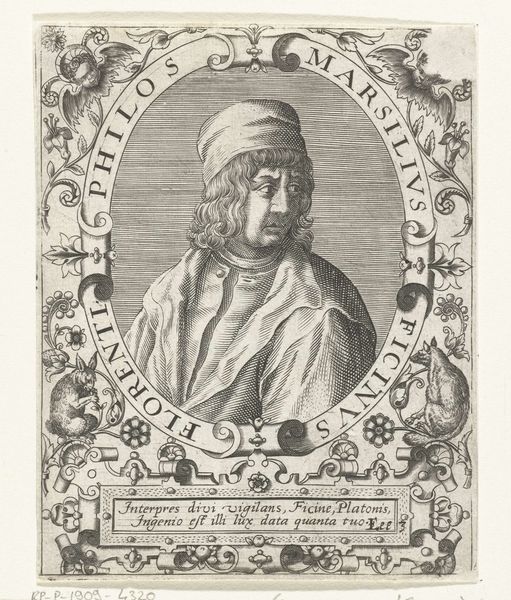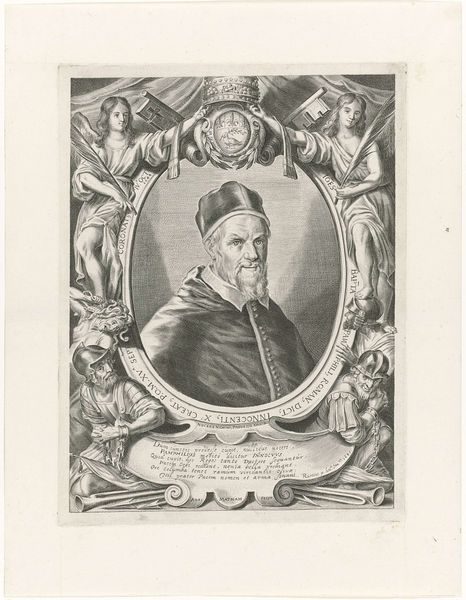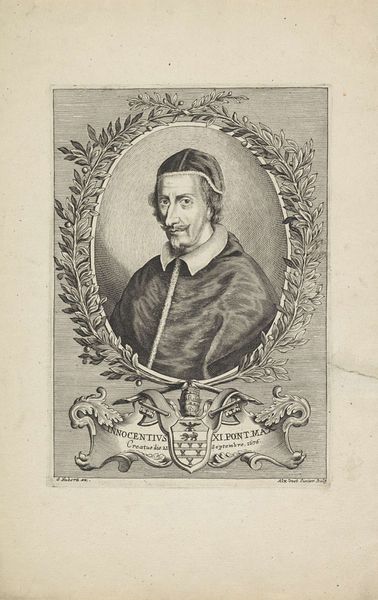
print, engraving
#
portrait
# print
#
old engraving style
#
pencil drawing
#
portrait drawing
#
history-painting
#
italian-renaissance
#
engraving
Dimensions: height 214 mm, width 162 mm
Copyright: Rijks Museum: Open Domain
Editor: Here we have Enea Vico’s engraving, "Portret van filosoof Marsilio Ficino," created sometime between 1533 and 1567. It’s striking how the oval frame, almost like a laurel wreath, contrasts with the philosopher’s rather plain garb. What do you make of the imagery here? Curator: Well, the image presents us with Ficino, yes, but consider how the print, itself a symbolic gesture, allows Ficino to transcend time. Vico’s work enables cultural memory. Notice the ornamentation–laurel, grotesque masks, even the inscription; each invokes classical antiquity, which Ficino so passionately revived. Editor: So it’s less about an accurate likeness and more about... conveying his intellectual weight? Curator: Precisely! The portrait is not simply a representation but an embodiment of Ficino’s philosophical project. Consider how the act of engraving, multiplying his image, extends Ficino's presence. What enduring concepts are being transmitted through his image? Editor: It’s interesting how the symbols surrounding him tell almost a different story than his rather somber expression. He looks very serious. Curator: His somberness could reflect the weight of reconciling classical thought with Christian doctrine, a key aspect of his work. Do you think the artist is trying to convey a sense of internal struggle, or perhaps pious dedication? Editor: Perhaps both! It’s definitely given me a lot to think about in terms of how we build legacies. Curator: Indeed, how we remember and re-present historical figures shapes our understanding of ourselves. It’s a dialogue across centuries.
Comments
No comments
Be the first to comment and join the conversation on the ultimate creative platform.
